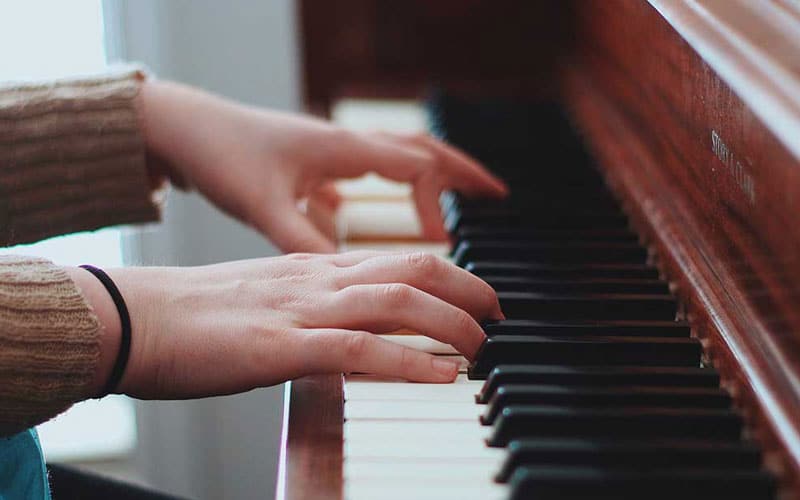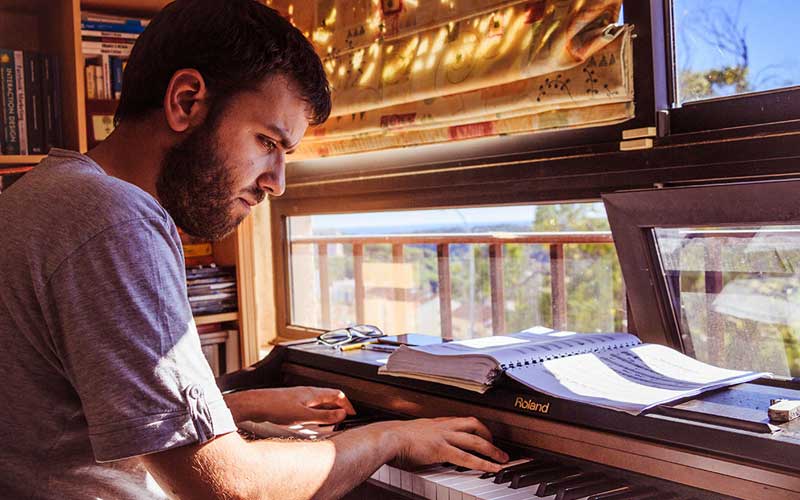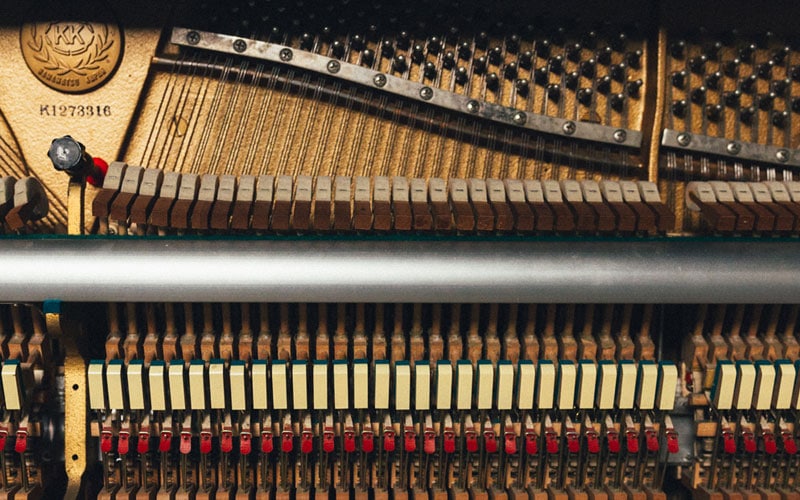
The Piano and the Others
Essentially, the place of practising should be the most sacred place of all for you. Remember! You wanted to become a pianist, so in order to come closer to this notion you need the best possible place to work on. (more…)

Essentially, the place of practising should be the most sacred place of all for you. Remember! You wanted to become a pianist, so in order to come closer to this notion you need the best possible place to work on. (more…)

After you have established where the piano should live in your house you should start thinking about how to coexist with it.
No doubt you would spend hours sitting in front of it, in rain, in sun and in snow. It is going to be tired of you playing with wrong notes, awful technique and tedious sound, and you are going to be tired of it “not responding” to your amazing musical ideas; until one day, that is. So, we need to find the best possible position for you to sit in front of it. The sitting position.
The reason why we need to address the right sitting position and the correct posture is because this will enable us to have longer and tireless hours of playing. Now, every human body in the world is unique, so it is extremely difficult and unsafe to proclaim for you in a website your own sitting position. This should be discussed in detail with your experienced piano instructor. Your instructor will judge by considering your height the length of your arms and the particular stool you are using, the position that you need to adopt while practising. If your body is still growing, the position must be changed again in the future. Many musicians have tried to manifest a way that should be adopted by most pianists when sitting on the piano. However, as you understood from the statements above it is very difficult to advice on that, since this could be very risky and unnecessary.
However, as a completely general guideline try the following: Obviously the sitting position should be as “natural” as possible. (There are various methods on teaching you how to sit properly, such as the Alexander technique. Try and see if that fits your style). Always remember, you are performing music; you are not digging in a mine to find gold. Therefore, in reality, the human body itself dictates its preferred position. Naturally, it should be as relaxed as possible.
Just do the logical thing: Sit up straight. (This sounds normal, doesn’t it?) Lean forward, but not too much. Your arms need to be as tranquil as possible too; for obvious reasons: the more relaxed your arms are, the less tired they will become after a long practising session. Do not sit too closely to the piano, as you would not sit too closely to a dinner table. Give some space to yourself from the piano. Your arms should fall freely in either side of your shoulders. Place you feet firmly on the ground, with your right foot slightly closer to the sustain pedal.
Just some general guidelines, but as I said above consult your teacher for more information, since you have a unique body structure from everybody else.

Another very important factor that will make a difference in our practicing routine is our mood when we are practicing. We can only do so many things that could help prepare us psychologically prior to start practicing. Yet, due to our busy lives, we do not always have the time to prepare for practicing. (more…)

Prior to start practising we should create a comfortable atmosphere in the practising room.
First, we should to have a warm and comforting temperature inside the room. It should be neither too hot nor too cold. This might sound a trivial a subject but, make no mistake; the right temperature will ensure longer and less exhausting practising routine. You do not really need to be sweating or even having cold fingers when you are practising.
In order to ensure that our body’s temperature is appropriate, try to wear clothes so that you do not sweat or lose body temperature too quickly. Sports shops offer a wide range of suitable clothing for exercising. (Yes, piano practising is a form of physical exercise). Often, people will argue that this or the other great pianist did not have to wear the most aerodynamic outfits when they were practising, yet, they still managed to become masters of their art. That could be absolutely true, and you could argue that by wearing armor every time you practice this makes your sound more solid. That is fine, it may well work. Who can be the ultimate judge of that? However, as a rule of thumb, sensible preparation (and that includes choice of garments) will take us faster to our goal of mastering the piano.
Personally, I try not to wear synthetic or artificial fabrics when practising, since those make my job harder. Wool, on the other hand, always does the job, so I prefer it. So, think temperature and clothing before practicing.
In addition, have a glass of water or a juice next to your piano so you won’t have to go to the kitchen in the middle of Schumann’s symphonic studies. This will boost your energy thus extending your practising time. However, try to avoid spaghetti Bolognese with extra cheese or any other fatty but tasteful indulgencies next to your piano. You don’t want to collapse in the final page of Rachmaninov’s second piano sonata.

Did you know that In order to practice the piano, you would need a violin? I’m only kidding! You would need a piano of course. A real piano I am afraid. Not a “fake” one.
However many people feel quite frustrated when the answer is so obvious. They would come and ask my advice about what sort of piano to buy when their daughter, son or themselves want to start the piano but they cannot afford a “real” one. I answer hesitantly that, yes, we could buy a digital piano to start with, and if we see that we are doing better, then we can move on to an actual piano. However, if one of your goals in life is not to play a “fake” version of the soundtrack of a blockbuster film, then, there must be no compromises; no mercy on your bank account. We need to really dig deep and save the money for that grand piano! Oh ok, it can be an upright to start with. But that is really a minimum requirement, since even an upright piano does not have, for my taste, the “proper” mechanics. So that’s the first step. Simply get a piano.
The reason why you need to buy a “real” piano is that it offers the actual pianistic feel that will drive you to properly perform your pieces. By learning with a grand piano for instance, you get to be closer to the proper pianistic experience. And you would need this experience if you want to express yourself through this amazing instrument.
Now, after we chose the piano we need to buy its little friend, too; the piano-stool. Yes, the stool can be the piano’s greatest friend or its most fierce enemy. It is the womb that will hold you on your way to the audience. It will, hopefully, hold your body in the right position for you to create music. Thus, in order to accommodate your body correctly it has to be the right height. This will optimize the naturalness of your contact with the piano. The correct height of the stool has to be discussed with your instructor. However, preferably chose a stool with adjustable height position.
Don’t forget to buy mothballs too if you buy a new piano. Mothballs will prevent moths from eradicating the hammers’ felt inside the piano.
So, that’s all to start.